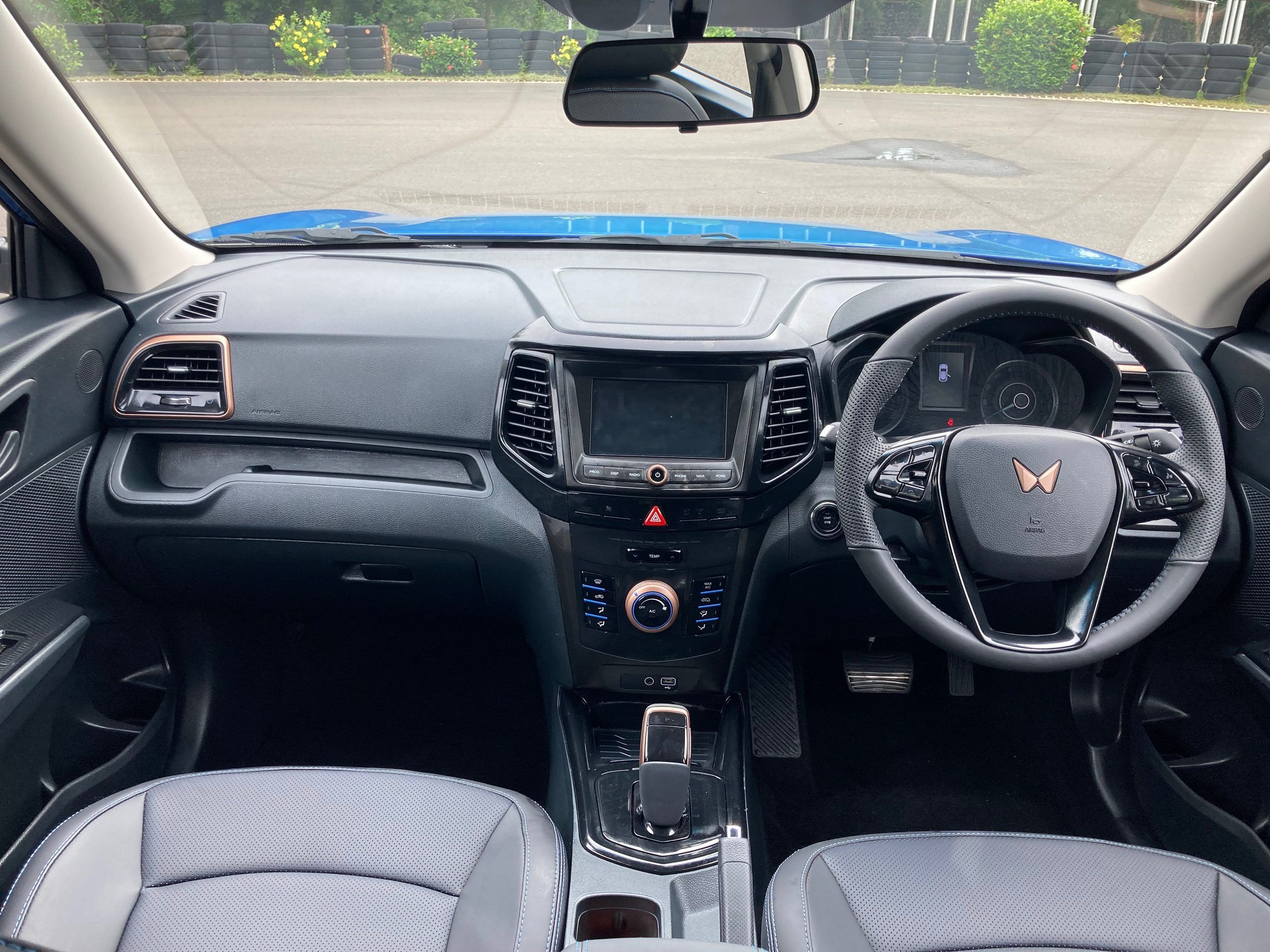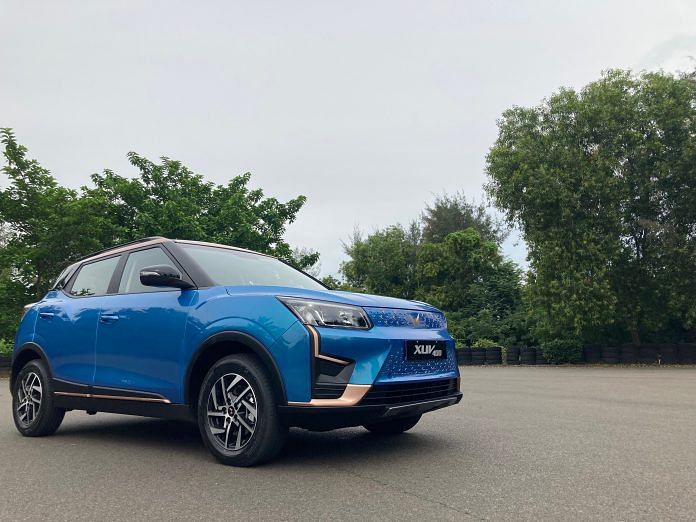Mahindra Research Valley (MRV) located on the southern outskirts of Chennai is a serious place, as the name suggests. Engineers spend days and months out here developing the next generation of cars and commercial vehicles. And the company is quite rightly proud of this place. Like with the XUV 700 a year ago, this year, Mahindra called the great and the good of the automotive journalism world, and others like me, to showcase their latest creation. But this one is electric, the XUV400.
A month or so ago, Mahindra showcased in Oxfordshire their next generation of large electric SUV concepts that they are developing in the United Kingdom. This car has nothing to do with those, this is a vehicle that is making a clear electric play for the most lucrative part of the Indian automotive market, the ‘C-Segment’ SUV where the Hyundai Creta and Kia Seltos dominate and print profits for their manufacturers. But despite the fact that 33,000 units are sold every month in this segment, only around 250 of these are electric — Hyundai Kona and MG ZS. With both these vehicles primarily imported kits and put together in India and not being pushed by their manufacturers, the segment is crying out for a viable electric competitor.
Mahindra believes that in the XUV400, they have the answer the buyers in this segment are looking for.

Also read: Mistry’s death shows the importance of airbags. But they are pointless without seat belts
The competition
Now when you look at the car, it looks familiar because it is based on the XUV300 design and platform. The XUV300 itself was designed around the Ssangyong Tivoli platform, one of the few positives from Mahindra’s ill-fated acquisition of the Korean carmaker in 2010. But while the XUV300 had lopped off 20 centimeters to fall inside the competitive ‘B-Segment’, where cars below four meters pay a reduced excise rate, the XUV400 retains the 4200mm length of the donor vehicle (Tivoli). Though it remains shorter than other vehicles in the segment, even compared to the likes of the Skoda Kushaq. But Mahindra also expects the XUV400 to take on India’s most successful electric vehicle as well — the Tata Nexon EV, which sits one segment lower.
However, this is not about size at all. Mahindra executives believe it is all about shifting to electric and the XUV400 will lead the charge. These are the vital stats of the XUV400: a Lithium-Ion battery pack of 39.8 kilowatt-hours capacity that can be charged to 80 per cent with a 50kW Direct Current (DC) fast charger in 50 minutes. And at full charge, the car will be good for a range of 456 km, according to testing by ARAI, although not involving then global WLTP range testing process. WLTP is a standard that automakers use and it evens out global variations in fuel economy thanks to road conditions and traffic. While the ARAI figures might be flattering, a real-world range of around 250-300 km can be expected. And that is good enough for a week of commuting.
Rajesh Jejurikar, Executive Director, Auto and Farm Sector, Mahindra and Mahindra told me that initial adoption of the XUV400 is most likely to be in multi-car households. “The fact is that for those longer drives on holidays, most people will have an alternate vehicle either at home or with a close friend or family member.” Mahindra might have showcased the car now, but it will only announce the price in January with deliveries starting at the end of that month. However, vehicles will be dispatched to dealers as early as next month for the company to get feedback. “We want to know what customers think of the design, the features and the performance. And what they feel the car should be priced at.”
Also read: Let the Ambassador RIP. India has got new ‘power cars’ and just as well
And what about the performance?
A couple of short and sweet drives around MRV’s testing area did highlight some of the better aspects of the car. It does get up to speed very fast, Mahindra claims a 0-100 kmph of 8.6 seconds, the fastest accelerating car they’ve ever made. But beyond that, it also handles the turns very well, as most electric vehicles do thanks to the battery pack’s weight sitting low down. In ‘Fearless’ mode, most exhilarating drive setting offered on XUV400, the car feels good, despite the fact that is a re-engineered internal combustion engine car. Most impressively, the XUV400 is very quiet, even by electric car standards.
But there are some things that are a bit jarring. To be honest, the XUV300 was never the best looking car and despite the new copper ‘Twin Peaks’ logo, which will adorn Mahindra’s electric and the other copper-coloured details across the car, the design looks a bit dated, too similar to the XUV300. The cars we drove were early production models and by the time customer cars start rolling off the line, things could change, especially on the inside. The infotainment software package in the vehicle I drove had not been flashed to the latest model and the screen was small, compared to what other carmakers offer today. The seats had enough side and lumbar support and felt comfortable, and the additional length of the vehicle compared to the XUV300 came out well in the form of better rear legroom and luggage space.
But I couldn’t help but think that the XUV400 needed a bit more work. With four months to add the finishing touches, Mahindra is taking its time sensibly before the final product comes on Indian roads.
Such early unveils have a motive – to make buyers wait. Also, with the Auto Expo 2023 scheduled for January, Mahindra is laying its cards on the table before the inevitable electric concept cars are showcased at that event, some fairly close to production. Will the gambit pay off? Well, the car is almost ready to go, and if the finishing work is well executed and the vehicle priced attractively, the XUV400 could achieve its objective.
@kushanmitra is an automotive journalist based in New Delhi. Views are personal.
(Edited by Anurag Chaubey)






